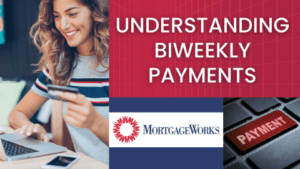
Interest Rates and Home Loans can feel like a maze. You’re not alone if you’ve ever felt lost in the labyrinth of percentages, payments, and paperwork. It’s overwhelming!
Navigating through Interest Rates and Home Loans is what separates the first-time home buyer from the seasoned investor. But without understanding this complex world, reaching that next level of financial savvy feels impossible.
Let’s face it – making sense of interest rates and securing a home loan is tough!
The Current State of Interest Rates
Interest rates, a critical factor in the housing market and home sales, have been witnessing some fluctuations lately. The 10-year bond yield has seen an uptick due to lower-than-expected unemployment claims and higher durable goods orders. Yet despite these changes, interest rates remain relatively stable.
Understanding Bond Yields
Bond yields play a pivotal role in shaping mortgage lending companies’ strategies. When you buy bonds, it’s like loaning money to the issuer for a fixed period with promised periodic returns till maturity.
A surge in bond yields, as we’ve recently observed, can push up mortgage rates since lenders aim at offering competitive returns on their loans vis-a-vis safer investments such as bonds.
Unemployment Claims and Their Impact on Interest Rates
The number of people filing for unemployment benefits directly impacts interest rate trends by indicating economic health status. Fewer jobless claims mean more employed individuals, which could drive inflationary pressures leading to potential increases in average rate levels.
This scenario is significant for prospective homeowners because increased employment usually translates into enhanced consumer spending power that drives demand and prices upward, impacting how much house they can afford based on a typical family’s monthly income.
Benefits of a Biweekly Payment Schedule for Loans
Consider a bi-weekly payment schedule for your home loan to potentially save money over time due to reduced interest accumulation.
Understanding Biweekly Payments and Their Advantages

A bi-weekly payment schedule means that instead of making 12 monthly mortgage payments in a year, you make half the amount every two weeks which adds up to 26 half-payments or equivalent to 13 full monthly payments. By doing this, you effectively make an extra month’s payment each year without feeling much impact on your budget.
This additional payment goes directly towards reducing your principal balance which has several advantages:
Faster Loan Payoff: The most immediate benefit is that it allows for faster repayment of the loan because more frequent payments mean less interest accrues on your remaining balance. Over time, these small savings add up and can shave years off the life of your benchmark 30-year fixed-rate mortgage.
Savings on Interest: Paying down principal quicker through more frequent installments results in substantial savings throughout the term as less interest accumulates over time.
Budgeting Ease: Making smaller but more frequent contributions may also align better with how some people manage their finances, especially if they receive income on a weekly or bi-weekly basis.
In order for this strategy to work, though, it’s crucial that borrowers ensure the lender applies those extra funds correctly, i.e., toward principal reduction rather than future installment prepayment.
Potential Drawbacks to Consider
While there are clear benefits associated with adopting such an arrangement, like any financial decision, there are potential drawbacks too:
Limited Flexibility: Once committed to such an arrangement, it might not be easy to get back onto a regular schedule should circumstances change requiring the need for cash elsewhere.
Possible Fees: There could be possible fees associated with this method.
Key Takeaway:
Adopting a bi-weekly home loan payment schedule can lead to significant savings on interest and expedite your mortgage payoff. However, it’s vital to ensure the lender applies extra funds towards principal reduction and be aware of potential drawbacks like limited flexibility.
Purchasing Second Homes after Foreclosure
Foreclosures can be a significant setback for homeowners, particularly those who invested heavily in their properties. Despite the setback of foreclosure, it’s not necessarily the conclusion to one’s homeownership experience. There are programs that allow individuals to purchase second homes after only a one year seasoning period post-foreclosure event.
Overcoming Past Financial Challenges to Purchase New Properties
The aftermath of foreclosures often leaves many feeling uncertain about future homeownership prospects. But there is hope, and options are available even after such financial challenges.
A crucial aspect here is understanding the ‘seasoning period.’ This term refers to the waiting time following major credit events like bankruptcy or foreclosure before qualifying for another mortgage loan. Investopedia provides an insightful explanation on this topic. While traditional mortgages might require you to wait several years, certain lending programs offer reduced seasoning periods specifically designed for potential buyers looking at purchasing secondary residences following previous fiscal hardships.
To qualify under these special provisions though, borrowers will need to meet specific criteria laid out by lenders offering these types of loans.
FHA Loans: A Viable Option Post-Foreclosure?

An FHA loan could be worth considering if you’re thinking about buying another house post-foreclosure. HUD has detailed information regarding FHA loans. The Federal Housing Administration (FHA) insures these loans which typically come with lower down payment requirements and more lenient credit score criteria compared with conventional mortgages – making them potentially accessible even if your credit took a hit during the previous ordeal.
Mortgage Loan Programs with Shorter Seasoning Periods
Beyond just FHA-backed products, other alternative financing solutions exist where waiting times may prove shorter than standard offerings depending upon individual circumstances.
Navigating Your Way Back into Homeownership
Taking steps back onto the property ladder requires careful planning and informed decision-making skills; however, equipped with appropriate knowledge around lender types thrifts, a little patience, and professional guidance, you can steadily lift home sales aspirations once again despite any prior hiccups along the path toward achieving residential stability.
Remember – having faced past obstacles does not necessarily preclude you from realizing future success within real estate markets. So don’t let former mishaps deter ambitions toward securing fresh homeowner status anew.
Key Takeaway:
Foreclosure doesn’t spell the end of homeownership. With programs offering reduced ‘seasoning periods,’ understanding lender criteria, and considering FHA loans, you can bounce back from financial setbacks. Remember: past hiccups don’t define future real estate success.
Conclusion
Interest rates and home loans can seem like a labyrinth. But with the right knowledge, it’s more of a stroll in Coachella Valley.
You’ve learned about the current state of interest rates, influenced by factors such as bond yields and unemployment claims. The benefits of biweekly loan payments were highlighted – a small change with a big impact!
Purchasing second homes after foreclosure? Yes, it is possible! A year-long seasoning period might be all you need.
This journey through interest rates and home loans has hopefully shed light on what was once murky waters.

